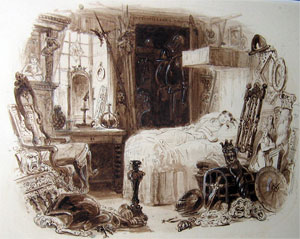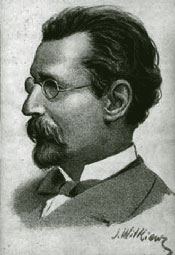Imagine that you’re an artist painting a picture. You’ve made a start. You revisit your perspective… then voices from over your shoulder scream, “There, to the right! A little more azure! A little more shadow on the left. When will the red go on? We want to see the red! ”
Painting to order, you might say, with a crowd of screaming fans? Can that be painting? Where’s the silence, the organic growth, the unity of intention? Isn’t there supposed to be a difference between painting and playing in the Superbowl, or shooting for a kupie doll for your child at the county fair with onlookers jostling your elbows?
By the same token, could writing a novel with a mob of screaming fans shouting their wishes and fantasies at you, whipping you forward with their impatience to know what happens next, really be writing? What are writing workshops for if not to get writers away from the madding crowd and into the cloistered hush in which may gleam the holy grail of artistic illumination?
Yet some of the greatest masterpieces of our literature were written almost that way, the noisy way—in weekly or monthly serials sold on the street, with readers howling their praise or criticism after each chapter both indirectly, through sales, and directly, through letters, reviews and buzz on the street. Charles Dickens, Sir Arthur Conan Doyle, George Eliot, W. M. Thackeray, Anthony Trollope, Elizabeth Gaskell, Poland’s Boleslaw Prus, even Dostoyevsky wrote in serial format.
It’s not easy to tell how much authors responded to their readers’ reactions, but there’s evidence that they did respond. It’s known, at least, that Dickens added chapters about America to Martin Chuzzlewit because the early chapters sold less well than expected, and it’s said that he moved Sam Weller into a more prominent role in The Pickwick Papers after fans shouted out their adoration of the affable cockney who called his master, Mr. Pickwick, “a reg’lar thoroughbred angel.” Sir Arthur Conan Doyle killed off Sherlock Holmes but had to revive him because readers wouldn’t stand for being deprived of their favorite detective.
 The serials, written in a day when literacy was expanding—some have suggested that the serials contributed to that expansion—had a democratic aspect. Working people who didn’t have time to spend days in drawing rooms with full-length books could read a chapter at a time and know they were weeping over the same catastrophe that had the upper classes and even the queen dabbing at their cheeks with lace handkerchiefs. They could shake their firsts together at the predatory legal establishment (Bleak House) or explore new developments such as women’s liberation or spiritualism (Emancipated Women). The serialized novels, written to formulas
The serials, written in a day when literacy was expanding—some have suggested that the serials contributed to that expansion—had a democratic aspect. Working people who didn’t have time to spend days in drawing rooms with full-length books could read a chapter at a time and know they were weeping over the same catastrophe that had the upper classes and even the queen dabbing at their cheeks with lace handkerchiefs. They could shake their firsts together at the predatory legal establishment (Bleak House) or explore new developments such as women’s liberation or spiritualism (Emancipated Women). The serialized novels, written to formulas dictating that each chapter end with a cliffhanger, of course generated massive suspense, which was a measure of their success. It’s an anecdote often repeated that, when Dickens was putting out installments of The Old Curiosity Shop and the story neared its climax, Americans, who had to wait for boats from England to read the successive chapters, rushed to the docks screaming, “Has Little Nell died?”
That same suspense, however, undoubtedly put additional pressure on the writers, who didn’t work in ivory towers. It’s reported that when the Polish literary master Boleslaw Prus, author
 of the serial novels The Doll (1887-89) and Emancipated Women (1890-93), was unable to publish a chapter of one of his popular works on time, a man rushed into the office of his publisher, the Daily Courier, demanding to see him. Face to face with Prus, the perturbed reader berated him for not having written the chapter on time, because, he said, “We want to know what happens next. We want to know what happens…” When the visitor failed to grasp that authors themselves could experience some confusion during the construction of such massive stories (Emancipated Women totals 1,000 pages), Prus invited him to sit down at a desk and write the next chapter himself. The man took fright and ran out of the office.
of the serial novels The Doll (1887-89) and Emancipated Women (1890-93), was unable to publish a chapter of one of his popular works on time, a man rushed into the office of his publisher, the Daily Courier, demanding to see him. Face to face with Prus, the perturbed reader berated him for not having written the chapter on time, because, he said, “We want to know what happens next. We want to know what happens…” When the visitor failed to grasp that authors themselves could experience some confusion during the construction of such massive stories (Emancipated Women totals 1,000 pages), Prus invited him to sit down at a desk and write the next chapter himself. The man took fright and ran out of the office.
Our ideas about writing and writers embrace two polarities: the image of the visionary who seeks solitude and emerges from it after a time with his revelations written as if on stone tablets, and the writer who has to leave the office of his newspaper or magazine by the back door to avoid avid, demanding fans. Traditionally, patronizing or even contemptuous language was used for the latter category; many serial novelists could have been described as “hack writers” because, like Dickens and Prus, they wrote to make a living. But—contrary to an old idea that only those who wrote without the spur of financial necessity wrote well—nothing could be more of a misnomer than to refer to the great serialists as hacks, either in the concepts behind such works as Bleak House or Vanity Fair, or in their execution.
In the matter of execution, we push close to a mystery at the heart of all writing: the unintended as well as the intended ways that writers communicate with their readers. The best writing of all kinds, from novels to journalism, is most often done by people who have internalized the personalities, feelings and needs of their readers so that the readers hear, in the voice of the writer, their own voices. (It’s worth mentioning that Prus and Dickens were journalists before they were great novelists.) So the abrasiveness, the intrusiveness of readers’ voices, however distracting, at the end of the day may have helped make the books the masterpieces they were—literature of the people, for the people, in a manner of speaking even by the people, a concept that would have astounded certain authors and critics of earlier ages when few but the wealthy had access to the pen.


